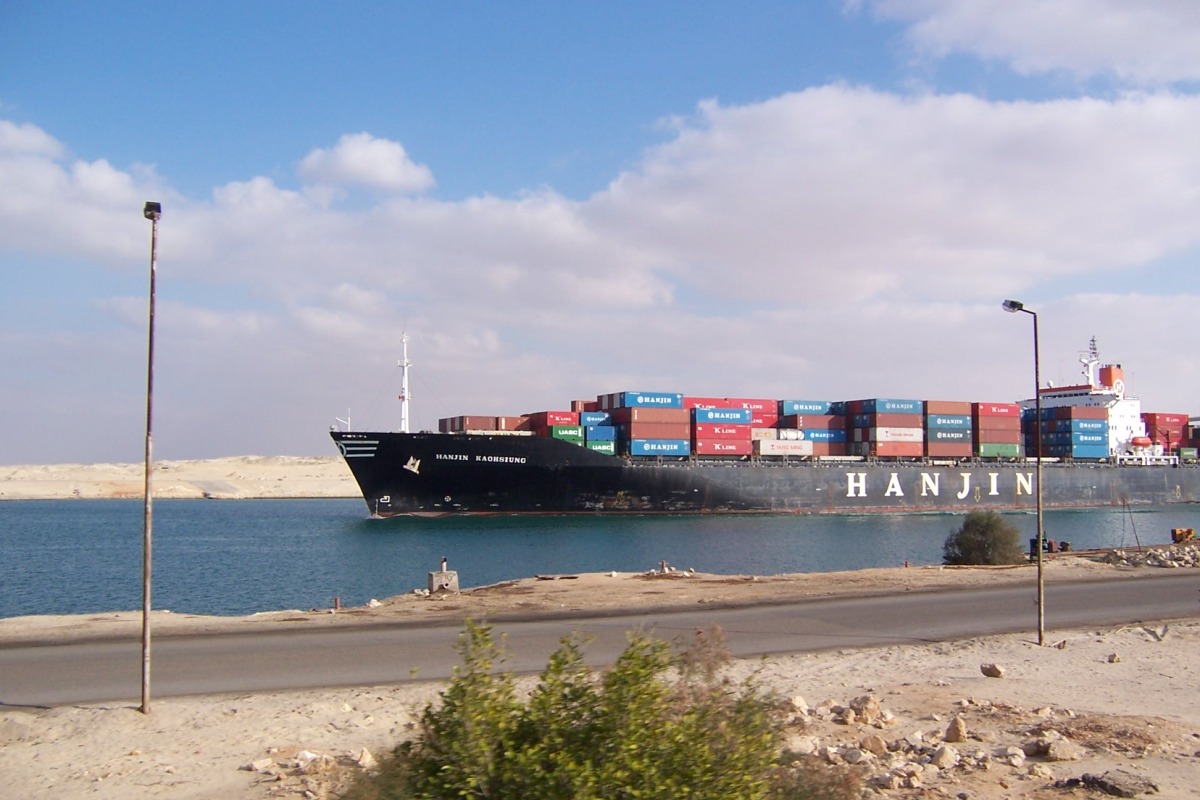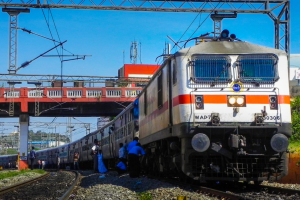In the geography of transport, straits are known as chokepoints because they limit the capacity of sea passage that cannot be easily bypassed. Chokepoints handle a large volume of oil traded and shipped through their narrow straits.
They are extremely crucial for global energy security. Any alternative to a chokepoint involves a long and circuitous route that would result in delays. In the global sea routes, the seven important chokepoints through which oil is transited and traded are Hormuz, Malacca, Bab-el- Mandab, Bosphorus, Gibraltar, Panama and the Suez.
Advertisement
While Panama and Suez are human creations, others are natural straits, gifts of nature to mankind. That is why Panama and Suez are called canals because they were excavated and engineered. The Suez Canal, opened in 1869, has turned 150 in 2019. It took 11 years to construct the canal, which connects the Red Sea with the eastern Mediterranean Sea and extends 100 miles (160 km) from Port Said to the Gulf of Suez.
It allows ships to sail directly between the Mediterranean and the Indian Ocean. The Suez Canal is the lifeline of Egypt. It is one of the world’s most heavily used shipping lanes. The income from the canal, some $ 4 billion a year, is the major source of revenue after tourism for the government of Egypt. In a year, more than 25,000 vessels use the canal with the tanker trade, very large crude carriers (VLCC) and ultra large crude carriers (ULCC), being the most lucrative.
To accommodate these carriers, the canal has been widened, deepened and furnished with every modern equipment to facilitate safety and speed. When the canal was opened, it had a draught of 26 ft. Today it is more than 70 ft. A new side channel of 22 miles (35 km), Ballah Bypass, was opened in 2016 to double the capacity of the channel from 50 to 100 ships a day.
This gives an indication of the volume of sea-borne vessels that the canal handles each day. The Suez Canal was closed for eight years during the Arab- Israeli wars of 1967-73. Three wars were fought during that period.
These conflicts had their genesis in the 1948-49 war when Israel declared itself an independent state following the UN partition of Palestine for the Jewish state. The Arab League refused to recognise the UN Resolution and the two-state solution.
These political developments made ripples in the Suez Canal. Hindrances were placed on Israel’s shipping access to the canal quite contrary to the Constantinople Convention of 1888 that made the canal a neutral zone under the British protection. The Ottoman empire had ratified the convention and allowed international shipping to freely pass through the canal in times of war and peace.
Yet, Israel had to face considerable difficulty in conducting its trade and commerce. From its birth pangs, Israel had to confront hostile neighbours. Suez Crisis in 1956 was an international crisis that arose when the Egyptian President, Gamal Abdel Nasser, nationalised the Suez Canal after western countries withdrew the promised financial assistance to build the Aswan Dam.
The French and the British, who had controlling interests in the company that owned the canal, sent troops to occupy the canal zone. Their ally, Israel, seized the Sinai Peninsula. It was a tripartite aggression. International opposition quickly forced the French and British out through a Resolution adopted in the General Assembly. Israel withdrew in 1957.
The incident led to the resignation of British Prime Minister Anthony Eden and was widely perceived as heralding the end of Britain as a major international power. Nasser’s prestige, by contrast soared within the developing world. In the Suez crisis, Egyptian nationalism was profoundly influenced by India’s freedom struggle. The common enemy was the colonial British administration.
The Suez Crisis had changed the course of world history. Britain and France lost their preeminence in the world. Their remaining colonies gained independence over the next several years. Egypt’s standing in the Arab world greatly improved. Experts believe that out of the crisis, the US and the earlier Soviet Union emerged as super powers. The Resolution of the General Assembly had established United Nations Emergency Force (UNEF) to keep borders at peace.
It was a neutral force not involving NATO and Warsaw Pact countries. UNEF was the creation of Lester Pearson of Canada who later became the Prime Minister of the country. He was awarded the Nobel Peace Prize in 1957 for his efforts. Pearson is considered to be the father of the modern concept of peace-keeping. The importance of the Suez Canal in its short history of 150 years is its influence on international relations. It has made countries; it has ruined countries. It has made persons famous; it has unmade persons.
However, the most significant aspect on which the fame of the Canal rests is its marvel of engineering. In those days, when excavation and surveying technology was not at all sophisticated and was mostly labourintensive, this 100- mile long ship canal was cut through the sands of the desert linking the Red Sea at Port Suez and the Mediterranean at Port Said.
This link also connected the Indian Ocean with the Atlantic through the Gibraltar almost halving the distance between London and Mumbai. Ferdinand de Lesseps, who had created this unique engineering marvel, was a broken man in later years for his unsuccessful attempt to repeat his triumph in the Isthmus of Panama.
The Suez Canal was exposed to uninterrupted piracy in Somali waters near the Gulf of Aden. Virtual absence of any federal government in Somalia had made the pirates more daring with their reach and authority extending beyond Kenyan coasts.
Even though multination naval presence had some effects on piracy, it was not possible for any navy to exercise effective vigil over the long Somalia coastline, the longest in Africa. In 2008, Somali pirates captured a Ukrainian vessel that was loaded with heavy weapons of Russian origin worth $ 30 million.
That hijacking was one of the most daring acts of piracy in the last ten years. The pirates demanded $ 20 million as ransom. They had used portable air defence systems, rocket propelled grenades, GPS and satellite phones during the operation. With this technology and firepower in their possession, an unarmed commercial vessel had no alternative but to accept its fate and surrender. Seafarers had no defence in an uneven confrontation. Somalia passed a new provisional Constitution in 2012 which reformed the state as a federation.
A federal government was formed the same year that started a period of reconstruction. Yet the security scenario in Somalia remains highly volatile. A multi-national coalition naval task force under 25-nation coalition of combined maritime forces based in Bahrain has remained active in the Horn of Africa to monitor, board, inspect and stop any case of suspect shipping.
It is a healthy sign that these patrols have been paying off with a steady drop in the number of piracy incidents. In 2017, few piracy incidents were reported as the combined navies of Asian and European nations promptly rescued hijacked ships including bulk carriers.
This dedicated international maritime structure under the UN initiative should remain present at all times for coordinated movement of ships up to Aden for their entry to the Red Sea. Egypt was a British protectorate.
The Suez Canal served as an essential military and commercial highway for Britain to her dominions and possessions in the East, the Far East and the southern hemisphere. The canal became a significant and strategically important shipping route after discovery of oil in numerous locations in the Gulf in the late 1950s and early 1960s. Savings in distance, time and transport have a major influence in planning the shipping world.
When the Suez Canal was closed during the Arab- Israeli wars, ships used to circumnavigate the Cape of Good Hope. That went on for eight years. The present global scenario is different. Globalisation has brought the nations closer and made them interdependent. Access to the Suez Canal remains very important as it is a transit route for oil from the Persian Gulf. The access to the Canal cannot be compromised at any cost. The world cannot afford another closure of Suez Canal. The dynamics are totally different today.
(The writer is a former central civil service officer who retired from the Ministry of Defence.)











